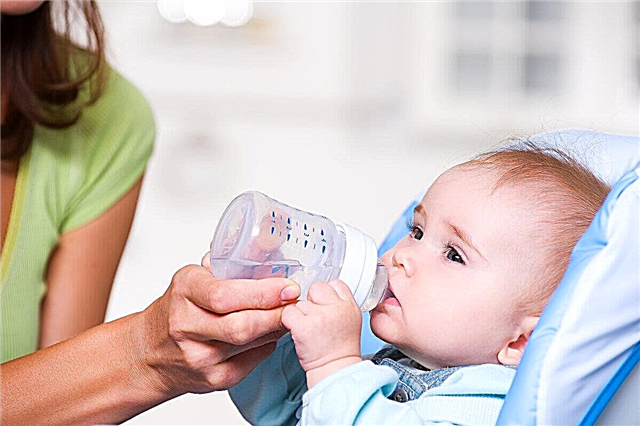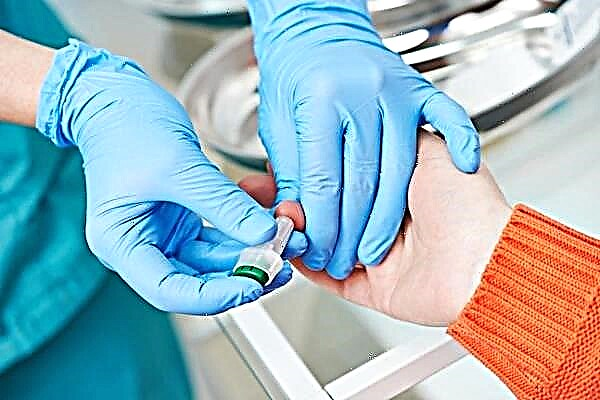It is difficult to find parents who have never faced the diagnosis of obstructive bronchitis in their baby. Children under 3 years of age very often suffer from similar ailments. This is due to the structural features of the bronchial tree - the narrowness of the lumen of the bronchus, as well as the high tendency of tissues to edema as a result of increased secretion. In this article we will talk about obstructive bronchitis of an allergic nature.
What is allergic bronchitis in children?
The disease is associated with the development of allergic inflammation in the wall of the bronchus with subsequent narrowing of its lumen. Clinically characterized by paroxysmal dry cough, wheezing, shortness of breath.
Reasons for the development of allergic bronchitis:
- food allergens;
- infectious allergens;
- pollen allergens;
- household allergens (house dust, house dust mites);
- epidermal allergens (epidermis and animal saliva, wool);
- mold.
The role of viral infection in the development of allergic bronchitis in children
A significant risk factor for the development of allergies in a child is infections transmitted by the mother during pregnancy. The thing is that viruses are able to rebuild the fetal immune response. ARVI often accelerate or enhance the development of obstructive bronchitis, bronchial asthma.
Respiratory syncytial infection, influenza, parainfluenza are especially unfavorable in terms of the development of respiratory allergies. In babies suffering from allergic obstructive bronchitis, a viral infection can cause severe complications.
With a respiratory infection, the autonomic cholinergic system is activated. In the cells of the bronchi, substances that cause spasm of the muscles of the respiratory tract begin to be synthesized - galanin, substance P, neuropeptides. There is also a powerful release of cytokines. The course of immune responses changes with a tendency to the formation of a Th-2 immune response. All this leads to the development of an obstructive asthmatic reaction, that is, a tendency of the bronchi to spasm in response to an allergen.
How to recognize allergic bronchitis in a child?
First of all, allergic bronchitis is distinguished by a paroxysmal dry cough with a whistling sound. The temperature for this disease is not typical. The symptoms of bronchitis worsen when a child comes into contact with a causative allergen.

This can be a walk in the park during the flowering period of trees and grasses, eating allergenic foods, sleeping on a feather pillow, and so on. With the exclusion of the allergen, the symptoms of the disease disappear.
It's no secret that the air, no matter how clean it is, always contains all kinds of viruses, bacteria and allergens. Which rush into our body with every breath. On any part of the path, they can "attach" to the mucous tissue, "settle" there, "take root" and begin to multiply, thereby causing an inflammatory process. If this occurs in the upper respiratory tract (nasopharynx, larynx), we get diseases such as rhinitis, laryngitis, pharyngitis, sinusitis, or for example tonsillitis or tonsillitis. And it also happens that hostile viruses, microbes or allergens penetrate deeper - into the lower respiratory tract - that is, into the bronchi and the lungs themselves. In this case, inflammations usually carry such frightening names as bronchitis, pneumonia, etc.
Why is allergic bronchitis dangerous?
The insidiousness of the disease lies in the fact that with repeated repetition of episodes of bronchial obstruction, the prerequisites for the development of bronchial asthma are formed. Almost 70% of children with symptoms of allergic bronchitis develop bronchial asthma.
Diagnosis of allergic bronchitis:
- Special allergy examination with the setting of skin tests or a blood test for specific immunoglobulins E.
- Examination of the function of external respiration (FVD).
It is difficult for children under 5 years of age to conduct a study of FVD, therefore, they are prescribed pulse oximetry, or a blood gas analysis to assess the degree of respiratory failure.
- Bronchography - the method of recording respiratory sounds with their subsequent assessment.
- Pulse oscillometry - assessment of bronchial patency based on characteristics of respiratory impedance and resonance frequency.
- The simplest method for assessing the function of external respiration in a child is peak flowmetry, that is, the study of the air flow rate using a special device - a peak flow meter. The readings are taken three times. The best result is recorded in the peak flow diary. The indicators allow us to assess the variability of the child's bronchial patency during the day, and also show how effective the treatment is.
Treatment of allergic bronchitis in children
Based on the main principles of allergy treatment and relief of bronchial obstruction in order to restore bronchial patency.
1. Elimination of a causal allergen:
- hypoallergenic life and diet;
- prevention of contact with plant pollen during flowering;
- elimination of contact with pets with epidermal hypersensitivity.
2. ASIT - allergen-specific immunotherapy.
 The gold standard for allergy treatment today. The method allows you to achieve the immunity of the child's body to allergens.
The gold standard for allergy treatment today. The method allows you to achieve the immunity of the child's body to allergens.
The treatment is long and requires constant monitoring of the process. The essence of the method is the introduction into the body of micro doses of an allergen in an increasing sequence.
For children, a method of sublingual specific immunotherapy was specially invented (doses of the allergen in droplets are taken under the tongue). In Russia, drugs from the Stallerzhen company are used. The therapy can be given to children from the age of 5.
3. Antihistamines. Are prescribed in courses for the period of exacerbation of the disease. Long-term uncontrolled use of drugs of this group is undesirable.
4. Bronchodilator therapy. Here our main friend and helper is a nebulizer. Inhalation with Berodual and Pulmicort is carried out to relieve obstruction.
5. Expectorant drugs. They are used in inhalation form, tablet forms, syrups and oral solutions can also be used.
The drug Ambrobene has proven itself well. When used by inhalation, the drug begins to act almost immediately, within a few minutes. Perfectly liquefies phlegm, activates surfactant production.
6. Glycyram (ammonium glycyrrhizinate). A medicine prepared on the basis of licorice root. Available in tablet and granular forms. Reduces bronchospasm, stimulates the adrenal glands.
7. Antileukotriene drugs. It is known that during allergic processes in the body, the production of leukotrienes increases. These substances are able to contract the muscles of the bronchi, increase the secretion of mucus.
Singular belongs to the group of these drugs. The medicine is prescribed in a course of three months. The effect occurs within the first month of use.
First aid for a child with exacerbation of allergic bronchitis
An exacerbation of obstructive bronchitis is indicated by paroxysmal incessant cough, accompanied by a whistling, and an increase in the number of respiratory movements (shortness of breath).
If you have shortness of breath, you must call an ambulance. In any case, parents are advised to show the sick baby to the doctor.
- before the arrival of an ambulance or the arrival of a doctor, you can inhale with berodual through a nebulizer. Until the age of 6, the dose of Berodual is 8 - 10 drops, older children are prescribed 15 - 20 drops. Berodual must be diluted with two milliliters of saline;
- in case of ineffectiveness of inhalations with Berodual, inhalations with Pulmicort at a dose of 0.25 mg / ml 2 times a day are used;
- Suprastin helps to quickly stop the allergic reaction;
- it is imperative to exclude the child's contact with the allergen, if one has been identified earlier.
Non-drug treatment of allergic bronchitis
Physiotherapy techniques are widely used in pediatrics. Treatment of allergic bronchitis is no exception.
- Sinusoidally modulated currents (CMT) are used in the post-attack period of bronchitis. The course of therapy helps to improve the indicators of the function of external respiration, positively rebuilds pulmonary hemodynamics.
- Pulsed low-frequency electromagnetic field. Eliminates autonomic dysfunction, improves the functioning of the immune system, improves the patency of small bronchi.
- Dynamic electroneurostimulation (DENS). Reduces allergic inflammation in the airways. Good to use in remission. The duration of the procedure is on average 20 minutes.
Do not overlook the various methods of breathing exercises. Gymnastics according to Strelnikova is especially effective.
Children in remission will benefit from a course of massage. Mothers can independently perform acupressure for their child. The acupressure techniques are simple and effective.
In this article, we examined the main risk factors for the development of allergic bronchitis in children, and dwelt in detail on the diagnosis and treatment. The main thing that parents should know is the basic principles of first aid in the event of obstruction in a child, as well as compliance with the doctor's instructions for organizing a hypoallergenic life.
Article rating:



